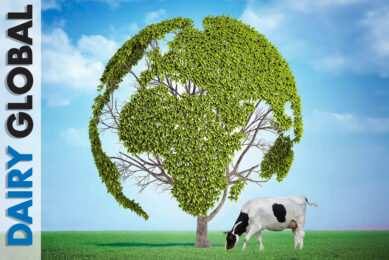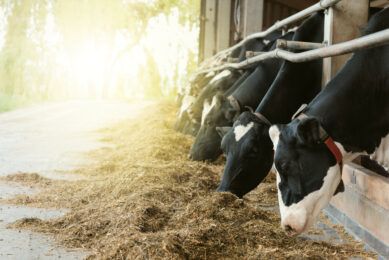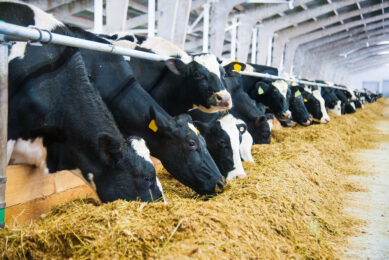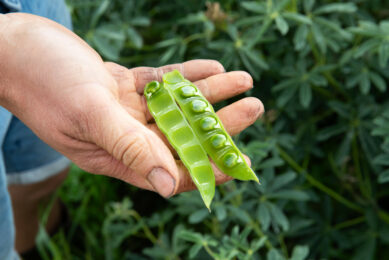Precision feeding and dynamic nutrients in dairy cows
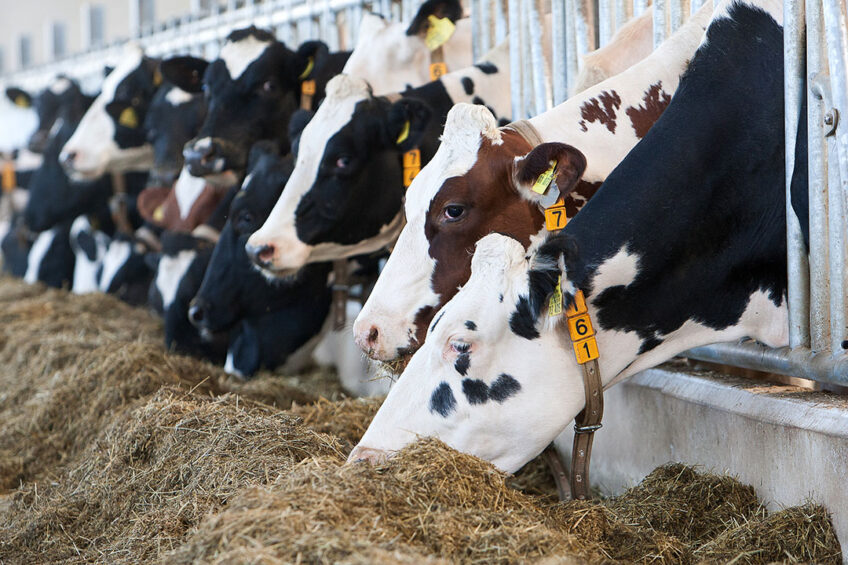
Sustainability in dairy nutrition remains a high priority topic within the industry. Precision feeding is an environmentally friendly concept to promote animal welfare standards for dairy cows.
Precision feeding for each cow’s requirements
Long-term genetic selection for high-yielding cows with increased productivity and calving intervals showed to increase susceptibility to metabolic diseases including mastitis and lameness. This is mainly a result of negative nutrient supply due to increased demand for energy, protein and dynamic nutrients (vitamins and trace element nutrition). The concept of precision feeding is being able to adjust feeding rations precisely to a cow`s requirements based on feedback from real-time sensors and herd productivity indexes. This, of course, requires a very close cooperation between dairy experts, farm managers and dairy factories.
Adjusting feeding rations including forages (minimum of 30% of total DMI) and concentrates (maximum of 70% of total DMI) should be based on analysis kept in the individual farm database (and/or area-oriented). This enables better financial decision thus not limited to feedstuffs availability and nutrients supply per kg of dry mater.
VIDEO: Precision technology for better yields and production
In a recent video, the NPPL team visited the Van Velde dairy farm in the Netherlands where they take a look at fertilisation strategies and the advantages it offers. Read more…
Dynamic nutrients are crucial
Additives, vitamins, minerals and trace elements considered as dynamic nutrients (not energy carriers) are often found from 0.5-5% of total dry matter intake in dairy rations. Dynamic nutrients are crucial to improve energy and protein metabolism as they are involved in enzymatic phenomena on a cell level amongst productive and reproductive tissues.
More importantly, dynamic nutrients are key drivers to improve animal health status due to their ability to support the immune system. Such additives should be formulated and use only with professional advice considering area-oriented micronutrient deficiencies or excesses. From a business perspective, their production, distribution and sales in the livestock industry have created a huge market that is worth millions.

1. Mineral nutrition (macro and microelements)
Based on precision feeding standards, tailored premixes are often formulated for dairy feed rations other than free-range minerals, a technique which may cause overfeeding due to behavioural response of the cows. Mineral nutrition covers all inorganic, organic and hydroxy sources. Inorganic sources are the primary source of trace elements mainly in the form of carbonates, sulphates and oxides (ionic bonds) which are often highly water soluble (high interaction between other nutrients in the rumen). Organic forms of trace elements are chelated to peptides or amino acids or other ligand, making stronger bonds that are of lower rumen solubility and offer higher absorption in the gut.
Dairy nutrition
For more articles on dairy nutrition, including the wild and surprising history of TMR, feeding oats, and chitosan to improve milk yield in Holstein cows, click here.
Organic minerals have no effect on nutrient digestibility but showed to increase total VFAs compared to sulphates (Pino and Heinrichs 2016). Organic bonds protect minerals further against antagonistic interactions within the rumen microenvironment. Financially, they do cost 10-15 times more compared to inorganic forms.
Hydroxy sources are minerals tightly bounded to hydroxy groups, insoluble in water (and rumen fluid), and soluble in acidic gut environment (pH<5).>
Insoluble means no oxidation, lower vitamin degradation and no connection to any other metal component. As non-hydroscopic components they are more palatable in final feed (mash and/or pellet). They also considered to have lower interaction with NDF digestibility (%), which it is considered as the key point of interest for nutritionists besides cost efficiency compared to the use of organic forms.
Components are separated into macro elements such as calcium, phosphorus, magnesium, potassium, sodium, chlorine and sulphur and micro elements such as iron, copper, zinc, manganese, cobalt, selenium, iodine and molybdenum. In addition, trace elements such as fluorine, nickel, boron, chromium, cadmium, arsenic and mercury are often found in free forms in nature (soil) but they are unnecessary as nutrients. In some cases, they are considered to have toxic effects on cows.
Protected fats in ruminant nutrition
The addition of fat to the diets of dairy animals can improve the energy balance in lactating cows and thus improve fertility, milk production and other biological functions. Read more…
Both macro (g/kg DM) and micro (mg/kg DM) elements have structural role (bone tissue) and contribute to enzymatic functions of cell membranes (phosphorus). Also, they can regulate alkaline-acid conditions (sodium, potassium, chlorine and sulphur) which plays an important role in calcium metabolism for close-up cows. They hold a key role in hormone and protein synthesis. Having said that, from an animal welfare perspective, trace minerals are of utmost importance because of supportive role in the immune system. They have an indirect role in helping the cows cope with metabolic and stress factors within the herd. Because most of the trace elements interact in an antagonistic way, mineral balance can support a consistent supply for further absorption in the gut. Research and development have been constantly improved their use in dairy nutrition by making bonds more bioavailable, with less rumen interaction to promote higher fibre degradation and with higher absorption rates in the gut. Because starch can inhibit fibre digestibility (Ferraretto et al., 2013), fibre-to-starch ration as well as carbohydrates source and concentration (%) can help nutritionists decide which trace mineral source could be ideal to formulate within the ration on a case-by-case scenario.
2. Vitamin nutrition
While many macro and micro elements are associated with various vitamin synthesis and synergistic reaction to enzymatic functions, supplementation of key vitamins can regulate growth rate, fertility, udder health, reduce SCC and improve milk production. Vitamins are categorised to fat-soluble vitamins (A, D, E, K) and water-soluble vitamins (thiamine – B1, riboflavin – B2, nicotinic acid – B3, pyridoxine – B6, pantothenic acid – B5, biotin – B7, folic acid – B9, cobalamin – B12 and ascorbic acid – C). They are nutrients highly sensitive to oxidation (Vitamin A > Ascorbic acid > Vitamin D3 > Thiamine > Riboflavin > Folic acid) and their degradation level also depends on level of pH in the rumen. Ruminants with healthy rumen can absorb more vitamins from the administrated levels. In a healthy rumen environment, B complex vitamins can be synthesised, yet cows treated with feed grade antibiotics inhibits rumen synthesis of B complex.
Grape polyphenols: An ally to fight heat stress
In livestock, certain polyphenols from grape extracts allow to preserve a high level of performance and help combat the negative effects of heat stress. Read more…
Cows with gastrointestinal inflammation progressively reduced ration digestibility with increased metabolic losses turning to negative nutrient balance because of lower absorption vitamins and trace elements. Some of the key synergistic effects is vitamin D3 influencing calcium and phosphorus utilisation. Vitamin B6 supports magnesium absorption also influenced by calcium and phosphorus blood levels. Biotin supplementation up to 15mg/head/day can improve hoof health, thus locomotion score. Niacin is involved in metabolic energy, amino and fatty acid synthesis and can play a preventive role against ketosis and fatty liver syndrome. Rations deficient in cobalt may also cause vitamin B12 deficiency.
Yet another example is antioxidant activity of vitamin E and selenium. They act together as an intracellular defence against reactive oxygen and free radicals. Also, they play an important role in maintaining integrity of biological cell membranes (so does phosphorous).
It is, however, important to mention that studies shows that the use of inorganic trace minerals significantly reduce vitamin E efficacy. Fresh and dry hays are good sources vitamins K1 (phylloquinone) and K2 (menaquinone) which are necessary in the blood-clotting mechanism. Fresh hays also have increased levels of b-carotene, which partially convert to vitamin A besides its positive effects on mammary gland health (Michal et al., 1994).
Conclusion
It requires a level of nutritional knowledge in combination with other on farm-oriented parameters to be able to formulate and tailored dynamic nutrient supply in the form of premixes. Precision feeding can be applicable when nutritionists analyse further farm data and herd indexes related to cow (re)productivity such as rumen fill, locomotion and body condition score.
Such data enables us to develop tailored premixes solutions supporting further balanced cost-efficient and environmentally friendly rations. In that way, overfeeding of less absorbable mineral forms can be avoided and vitamin nutrition can be optimised on the final TMR and/or PMR.
To conclude, start with why, how and when we feed such additives so that return on investment from this use can be measurable as well as beneficial for following (re)production cycles of cows in the herd.
References available on request.
Join 13,000+ subscribers
Subscribe to our newsletter to stay updated about all the need-to-know content in the dairy sector, two times a week.



